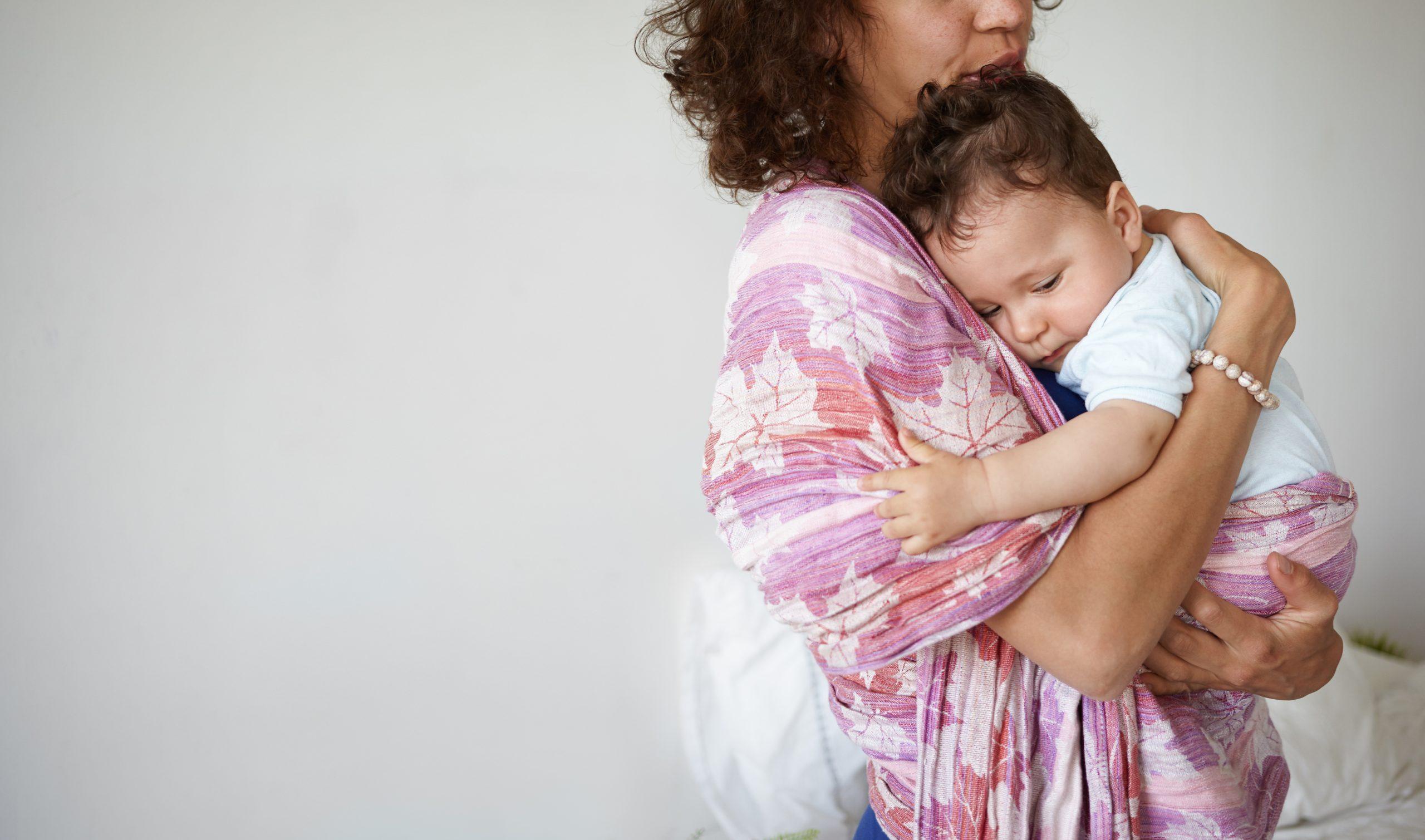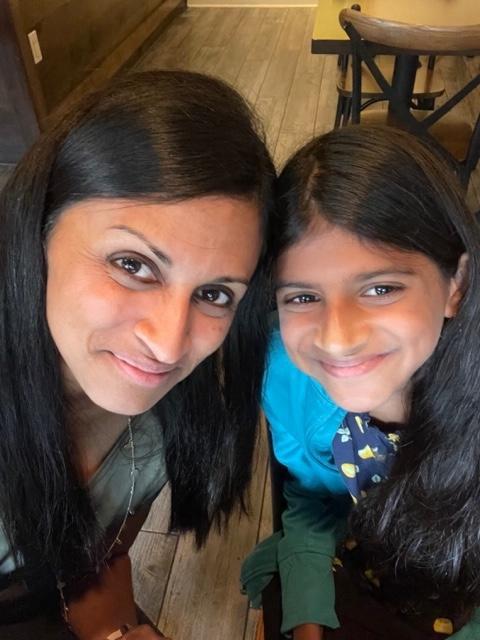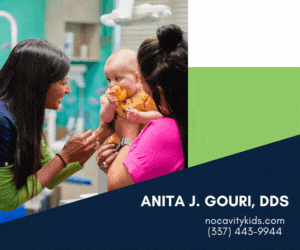Disclosure :: This post was written by Dr. Anita Gouri of Lafayette Pediatric Dentistry. She shares her story in hopes that others know that they are NOT alone and that there are resources available.
Tongue Ties, Motherhood, and Dentistry: My Story
 “It’s not you. It’s your baby. Pump.”
“It’s not you. It’s your baby. Pump.”
After an agonizing one-hour session with a lactation consultant, 2 weeks post-partum, my daughter screaming in my arms and my chest throbbing with (emotional and physical) pain, this is the info I was given.
“Your baby just can’t latch.”
“But…Why?”
“(Shrug…pause…) She’s just a lazy eater. But don’t worry you’re doing everything right.”
Am I?? A baby’s one job right now is to eat, right? (Well, that and poop). There’s literally one thing on the menu, and my daughter wouldn’t eat it.
Annnnd, cue all of the “I’m a failure as a mom” feels…
Dejected yet determined, I pumped my heart out and bottle-fed, yet we continued to struggle with feeding. Sweet S would finish a 3 oz bottle of my much-labored-for milk, and then promptly throw up most of that liquid gold shortly after eating, despite holding her upright and painfully still after feeding and burping. She would then start screaming in pain. We thought it was the bottle— we bought Dr Brown’s anti-colic bottles with ALL the parts that require painstaking cleaning afterwards (I know you know about the tiny cylindrical brush). I also gave up gassy foods, allergenic foods, and dairy. We tried changing the nipple flow sizes. Feeding position. Burping in the middle of feeds. Not burping in the middle of feeds. Gripe water. Mylicon. Rice cereal in the bottle.
Nothing helped. Every feed resulted in a painful nightmare.
Our relatives and pediatricians attributed these difficulties to “colic-like” spasms that are a result of the newborn gut still maturing. “She’ll grow out of it.” So we soldiered on.
When I wasn’t trying in vain to soothe my screaming child, I was chained to the breast pump, frantically trying to provide her next meal. I had friends who would pump and store bag after bag of excess milk in the freezer. I couldn’t even provide enough for her next bottle. Despite consuming everything I could to boost my supply (I know you also know about the big can of brewer’s yeast), my supply was insufficient. My doctor told me I was probably too stressed and needed more rest to produce more milk. So between the pumping and soothing and worrying and lactation-tea-brewing, I was also supposed to find time to sleep and not stress.
I wasn’t enjoying my baby. I wasn’t enjoying motherhood.
We made the decision to switch to formula since my supply was so low….and symptoms only worsened. This time, the screaming would start mid-feed. She would arch her back in discomfort, ball up her fists, and turn red in the face—brand new symptoms of pain that we never saw before. The spitting up increased also, even after switching to the most broken down non-dairy formula available. Our clothes, our baby, and our lives constantly smelled of vomit. Nutramigen vomit.
Our pediatrician told us these symptoms could be due to acid reflux and prescribed her medication to treat this. But the baby Zantac did nothing to alleviate my sweet girl’s pain. She grew to hate drinking formula and would refuse to finish her bottle many times. We would drag her feeds out for an hour sometimes, trying to get some calories in her.
We were at our wits end, and our hearts would grow heavy with worry and dread every 3-4 hours when it came time to feed our child. It was agony watching her suffer.
Once we introduced her to solid foods, things got better. Though the pain and the reflux continued after bottle-feeding, she was much more able to tolerate purees, which we supplemented with butter to make up for the calories she was losing through her formula intolerance. Though it took her a long time to finish each bite, and she had to be very distracted in order to eat (thank you, Baby Einstein), we were grateful she was no longer in pain and was vomiting less.
However, around age 19-20 months, we noticed she still could barely tolerate anything not pureed. We saw other babies eating table food that their parents would eat, yet our baby could barely tolerate anything more than a puff. She was still largely on pureed baby food and butter! She would gag on bits of chicken nuggets, scrambled eggs, macaroni, and even fruit. Not until she was 3 did she begin to tolerate more typical toddler fare.
It was not until she was 4 years old, in 2014, that she ate her first bite of pizza.
In 2017, my newborn nephew started exhibiting all of the same problems as my daughter—constant gassiness, reflux, colic, and an inability to latch. He was diagnosed with a posterior tongue tie, which can inhibit a baby’s ability to latch properly. Once the tongue tie was released, he was able to feed like a champ and all of his discomfort disappeared!
Immediately, I dived into courses and seminars on the subject. I discovered that, while it was a relatively new topic, tongue ties have always existed and are often overlooked. Tongue and lip ties cause problems that mimic colic, reflux, and picky eating, because they inhibit proper movement of the tongue, which in turn inhibits proper swallow and suck mechanics. I was blown away. We weren’t even educated about this in dental school, yet all of it made perfect anatomical sense. If your tongue can’t move, how can perform its many important functions optimally? Moreover, there was ample research, evidence, and education available that supported the release of tongue ties improving breast and bottle feeding outcomes!
Once I learned enough about diagnosis, the first thing I did when I went home was lift up my then 7 year old daughter’s tongue: Boom. There it was. A posterior tongue tie—one you would not see unless you lifted up her tongue. My eyes welled with tears. Tears for the pain she endured. Tears for all of the difficulty and aversion to feeding in early years. Tears because I now had an answer. She didn’t feed well because, quite simply, she couldn’t.
Fortunately, today, fewer mothers and babies need to suffer. Far more providers, including lactation consultants, speech pathologists, feeding therapists, physicians, and dentists, are now aware of posterior tongue ties and the myriad problems they can cause.
I share my story in hopes of preventing anyone else from suffering as my daughter did. I tell every mother whose baby I treat in my office for tongue/lip tie to share their story as well. No parent should feel that they are alone. If you feel that something just isn’t right, trust your intuition and seek help.
well. No parent should feel that they are alone. If you feel that something just isn’t right, trust your intuition and seek help.
Fast forward to today. My beautiful, healthy 12 year old daughter now eats as well as we eat, preferring always to try new things, explore various cuisines from different cultures, and actually dislikes most junk foods! Her favorites are sushi, shrimp po-boys, and grilled octopus!
Her least favorite to this day? Milk.
……..
If your infant or toddler has trouble latching or eating, the Acadiana Breastfeeding Coalition can help you. Check out their website: acadianabreastfeeding.org or call Lafayette Pediatric Dentistry to schedule a consultation: 337-443-9944.
 Would you like to read more about tongue and lip ties? Check out the content below!
Would you like to read more about tongue and lip ties? Check out the content below!
The Truth about Tongue and Lip-ties
Tongue Ties Part 2: Why a “Quick Snip” is Rarely a Quick Fix
Real Life, One Mom’s Experience with a Tongue Tie & Frenectomy


















